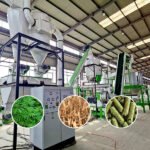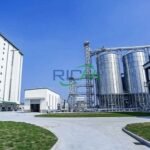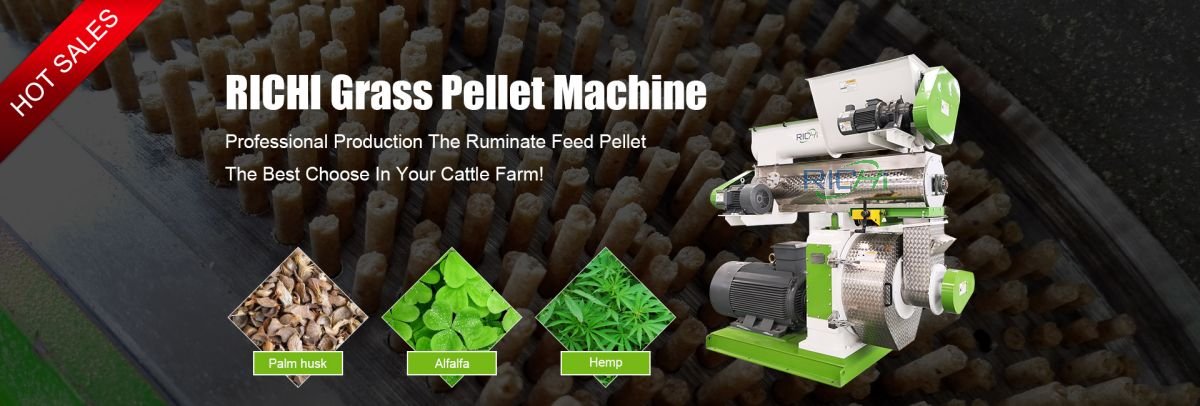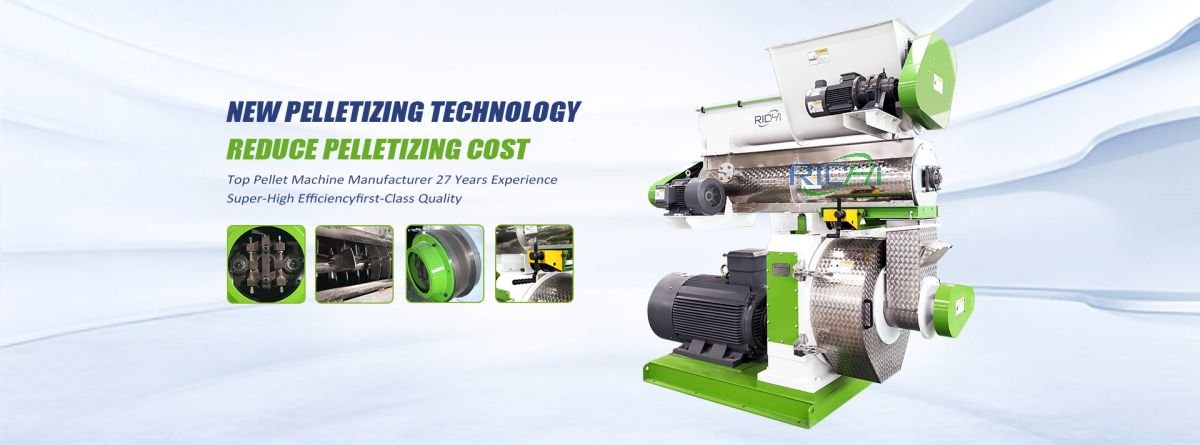The increasing demand for efficient and sustainable animal feed production has led many feed mill operators to explore versatile equipment options. One such option that has gained attention is the Grass Pellet Machine. While primarily designed for processing grass into pellets, these machines have shown potential for broader applications in feed mills. This article explores the feasibility and considerations of using Grass Pellet Machines in feed mill operations.
Adaptability of Grass Pellet Machines
Grass Pellet Machines are designed to process fibrous materials into compact, easily manageable pellets. This fundamental capability aligns well with many feed mill requirements:
- Versatility in Raw Material Processing:
- Beyond grass, these machines can often handle a variety of feed ingredients, including hay, straw, and other fibrous agricultural byproducts.
- Many feed formulations include fibrous components, making these machines potentially suitable for certain feed production processes.
- Pelletizing Capability:
- The core function of compressing materials into pellets is a common requirement in feed mills.
- The pelletizing process can improve feed digestibility and reduce waste, aligning with feed mill objectives.
- Scalability:
- Grass Pellet Machines come in various sizes, from small-scale to industrial capacities, potentially fitting different feed mill operations.
Potential Applications in Feed Mills
Grass Pellet Machines could find several applications within feed mill operations:
- Specialty Feed Production:
- Ideal for producing high-fiber feed pellets for ruminants like cattle and sheep.
- Useful in creating pelleted forage supplements.
- Ingredient Preparation:
- Can be used to pre-process fibrous ingredients before they are incorporated into more complex feed formulations.
- Waste Reduction:
- Capable of processing agricultural byproducts and waste materials into usable feed components.
- Organic Feed Production:
- Well-suited for producing organic animal feeds that often rely heavily on grass and other natural fibrous materials.
- Custom Feed Formulations:
- Can be used to create specialized feed blends for niche markets or specific animal nutritional needs.
Related post:Alfalfa Pellet Machine
Considerations for Implementation
While Grass Pellet Machines show promise for use in feed mills, several factors must be considered:
- Feed Formulation Compatibility:
- Not all feed formulations may be suitable for processing through a Grass Pellet Machine.
- The machine’s capability to handle non-fibrous ingredients like grains and supplements needs to be evaluated.
- Production Capacity:
- Feed mills need to assess whether the output capacity of Grass Pellet Machines aligns with their production requirements.
- Quality Control:
- Ensuring consistent pellet quality and meeting feed industry standards is crucial.
- The machine’s ability to produce pellets that meet specific nutritional and physical characteristics must be verified.
- Regulatory Compliance:
- Feed mills must ensure that using Grass Pellet Machines complies with local and international feed production regulations.
- Integration with Existing Systems:
- The compatibility of Grass Pellet Machines with existing feed mill equipment and processes needs to be carefully evaluated.
- Cost-Effectiveness:
- A thorough cost-benefit analysis should be conducted to determine if incorporating Grass Pellet Machines is economically viable for the feed mill.
Advantages of Using Grass Pellet Machines in Feed Mills
Incorporating Grass Pellet Machines into feed mill operations can offer several advantages:
- Increased Flexibility:
- Allows feed mills to diversify their product range and cater to a broader market.
- Improved Resource Utilization:
- Enables the use of locally available fibrous materials that might otherwise go to waste.
- Enhanced Feed Quality:
- The pelletizing process can improve feed digestibility and reduce feed waste at the farm level.
- Energy Efficiency:
- Modern Grass Pellet Machines are often designed with energy efficiency in mind, potentially reducing operational costs.
- Sustainability:
- Aligns with growing trends towards sustainable and environmentally friendly feed production practices.
Challenges and Limitations
Despite the potential benefits, there are challenges to consider:
- Machine Adaptations:
- Grass Pellet Machines may require modifications to handle the diverse ingredients used in commercial feed production.
- Operator Training:
- Feed mill staff may need additional training to operate and maintain these machines effectively.
- Pellet Durability:
- Ensuring that pellets produced meet the durability standards required for commercial feed can be challenging.
- Ingredient Mixing:
- Grass Pellet Machines may not have the sophisticated mixing capabilities required for complex feed formulations.
Case Studies and Industry Experiences
While specific case studies of feed mills using Grass Pellet Machines are limited, some experiences from related industries provide insights:
- A dairy farm in Wisconsin reported successfully using a modified Grass Pellet Machine to produce high-fiber feed supplements for their cattle, noting improved feed efficiency and reduced waste.
- An organic poultry feed producer in California integrated a Grass Pellet Machine into their operation to create specialized organic feed blends, capitalizing on locally sourced grass and legume crops.
Expert Opinions
Feed industry experts have varying views on the use of Grass Pellet Machines in feed mills:
- Dr. Sarah Johnson, an animal nutritionist, states, “While Grass Pellet Machines show promise for certain types of feed production, particularly high-fiber formulations, they may not be suitable for all feed mill operations. Careful evaluation of nutritional outcomes and production efficiency is crucial.”
- John Smith, a feed mill equipment specialist, notes, “The adaptability of Grass Pellet Machines is impressive, but feed mills need to consider the full spectrum of their production needs. These machines might be more suitable as complementary equipment rather than primary production units in most commercial feed mills.”
Conclusion
Grass Pellet Machines show potential for use in feed mills, particularly for producing specialty feeds, processing fibrous ingredients, and creating high-fiber supplements. Their ability to handle a variety of fibrous materials aligns well with certain feed production requirements and trends towards sustainable, diverse feed options.
However, the integration of Grass Pellet Machines into feed mill operations requires careful consideration. Factors such as feed formulation compatibility, production capacity, quality control, and regulatory compliance must be thoroughly evaluated. While these machines offer advantages in terms of flexibility and resource utilization, they may not be suitable for all types of feed production.
Feed mill operators interested in incorporating Grass Pellet Machines should conduct thorough assessments, potentially starting with small-scale trials. Collaborating with equipment manufacturers to adapt machines for specific feed mill needs could also be a viable approach. As the feed industry continues to evolve, innovative uses of equipment like Grass Pellet Machines may play a role in meeting changing market demands and sustainability goals.
Ultimately, the decision to use Grass Pellet Machines in feed mills should be based on a comprehensive analysis of specific operational needs, market demands, and long-term strategic goals of the feed mill.







